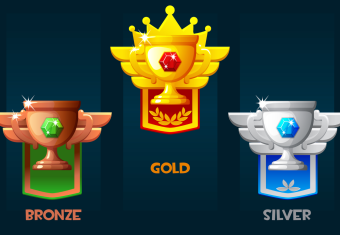In this post I'll briefly discuss one of our recent experiences with .NET MAUI. If you're not familiar with .NET MAUI, think of it as a tool that lets you create mobile apps that work either an iOS or Android phone, using mostly the same code.
In a previous post, I discussed .NET MAUI and the reasons why our team has embraced it. One standout feature was mentioned: code reuse. The ability to write once and deploy across multiple platforms without needing to rewrite large swaths of code can be a game-changer. That is not the whole story of code reuse though.
Redeveloping Hone’s Mobile App with .NET MAUI
Recently, we had the privilege of collaborating with the talented team at Hone. They entrusted us with a significant task—redeveloping their mobile app, originally built using Xamarin, and transitioning it to its successor MAUI.
This project wasn't just about updating a their mobile app to MAUI. We also had to improve the app and better integrate it with Hone’s larger ecosystem, which includes cloud services, PC applications, and specialised devices. The mobile app is a critical piece of this puzzle especially for end users, and hence it is essential that the app works seamlessly with the wider ecosystem.
Why .NET MAUI?
.NET MAUI became the obvious choice for this redevelopment because of its ability to unify different platforms. This is because with .NET MAUI, we could easily leverage Hone's existing SDK built with .NET, an approach that maximised code reuse across the ecosystem and ensured enforcement of business rules centrally across all platforms mobile and otherwise. This was a crucial consideration, as it allowed us to create a more maintainable and scalable solution with Hone.
A big advantage of using MAUI was that, since it's all part of the .NET family, integration of Hones SDK was smooth and made it easy to maintain consistent standards across mobile, desktop, and cloud-based services. This streamlined development and let us focus on improving the mobile app rather than re-implementing existing features.
The Benefits of Code Reuse
By using .NET MAUI, Hone’s app now shares a substantial portion of its codebase between its cloud, mobile, and desktop instances. This reduces maintenance efforts and ensures that future updates can be rolled out swiftly across all platforms. The same logic that powers mobile functionalities is applied to their desktop app, cutting down on both development time and costs.
Since MAUI is part of .NET, it integrates cleanly with other .NET technologies, allowing Hone’s app to easily integrate with cloud services and other parts of their ecosystem. This interconnectedness allows a consistent and seamless user experience, whether their customers are on a mobile device, desktop, or engaging through cloud-based services.
Final Thoughts on .NET MAUI
Working with Hone on this project reaffirmed our belief in the value of .NET MAUI. Its ability reduce redundancy and promote efficient, scalable code reuse across multiple operating environments makes it a powerful tool for development teams.
As businesses increasingly look for ways to reduce costs while maintaining high standards of quality, solutions like .NET MAUI are likely to become more prevalent. If you're redeveloping an app or building something from the ground up, leveraging a cross-platform framework like .NET MAUI can offer significant long-term benefits.
We look forward to continuing to work on innovative projects like this and watching how .NET MAUI continues to evolve for cross-platform mobile development.


